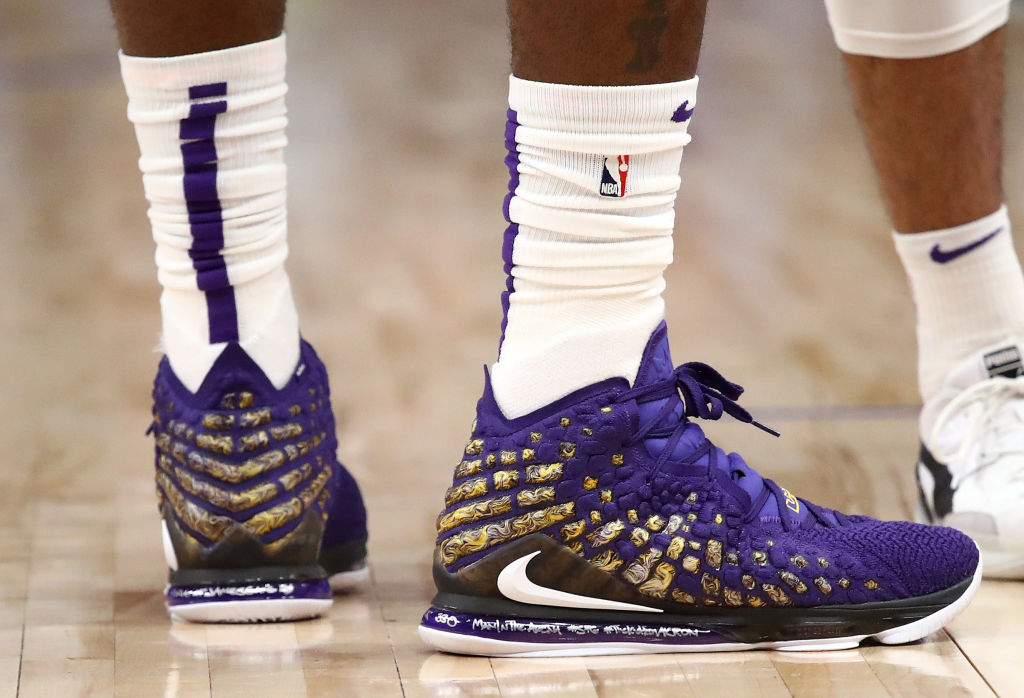NBA
Why Scientists Say LeBron James’ Basketball Sneakers are the Some of the Best On the Market

While basketball sneakers have been around since the 1970s, they’ve become big business in recent years. Ever since Michael Jordan burst onto the scene, shoes morphed from a simple piece of clothing to a status symbol; if you’re an NBA star like Jordan or LeBron James, you have to have your own line of basketball sneakers
But, with so many brands and player-specific models on the market, it can be hard to choose the right shoe. Thankfully a group of scientists have recently determined which basketball sneakers are the best that money can buy.
The brief history of basketball sneakers
While they wouldn’t be considered basketball sneakers today, Converse’s Chuck Taylor All-Stars first hit the market in 1917. Taylor was a semi-pro basketball player and, while the shoes weren’t made for him, he helped to improve the sneaker before working as a Converse salesman.
Things then started to ramp up in the 1970s. Nike released its first basketball sneaker, the Bruin, in 1972; the Puma Clyde, made for New York Knicks guard Walt “Clyde” Frazier in 1973, was the first signature shoe ever released. Dr. J’s Pro Leather would come out a few years later, followed by the Nike Blazer and Air Force 1.
In 1985, the Air Jordan I hit the market, ushering in a new era of basketball sneakers. Since then, the industry has continued to grow, with stars like Patrick Ewing, Allen Iverson, Kobe Bryant, and LeBron James all getting their own signature shoes. The days of functional Chuck Taylors are over; modern basketball sneakers have to be works of art and pieces of athletic equipment.
CBC’s basketball sneaker study
Since basketball sneakers are such big business, CBC Marketplace decided to investigate the marketplace. They picked out 11 pairs of shoes, representing Nike, Addidas, and Under Armour; three came from each brand, with each pair representing a “low,” “medium,” or “high” price points. Two “wildcard” pairs, The Adidas Harden Vol. 3 and the Nike PG 2.5, which Zion Williamson infamously ripped through, rounded out the roster.
Once the shoes were selected, Marketplace “commissioned Sport Insight, a biomechanical research team located at the University of Calgary,” to test them. Each shoe was assessed on its “traction, energy return, cushioning stiffness and forefoot bending stiffness.”
“The reason that we looked at these mechanical properties is there’s research that have associated these mechanical properties with either performance or injury aspects,” Darren Stefanyshyn, president and CEO of Sport Insight, explained. “So we can have an indication, by doing these mechanical tests, how this particular shoe is going to function or perform.”
LeBron James leads the way
While the study concluded that there is no correlation between price and performance, some big-name sneakers did finish atop the leaderboard. Nike’s LeBron 16, Adidas’ Harden Vol. 3, and Jordan’ ‘Why not?’ Zer0.2 all finished in the top five; they were joined by the Adidas Dame 5 and Adidas Pro Spark 2018.
The LeBrons were one of the most expensive sneakers tested, but they scored well in energy return and cushioning stiffness. While they had low traction scores, that could actually help players make sharper cuts on the court.
While the study showed that price and name recognition aren’t everything, LeBron and Michael Jordan still came out on top. Whether it’s on the court on in the shoe store, it’s just hard to argue with greatness.











